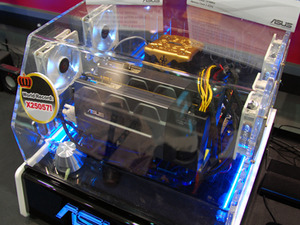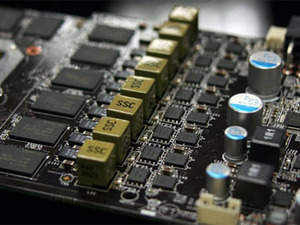
Nvidia: Ion, 3D Glasses and GPU willy waving
Nvidia’s other major focus was, of course, on its Ion platform, which is now starting to gain traction with over 20 design wins, including biggies from both Acer and Lenovo – the company says that it expects to announce more design wins soon. Jen-Hsun Huang said that heterogeneous computing is the future before saying that Intel’s Atom CPU was a “wonderful achievement.”Before passing over to Drew Henry, General Manager of GeForce and Ion at Nvidia, Huang said: “We believe CPU+GPU co-processing is not just for high-end systems, it’s now general purpose and you can use the processors for more than just video games. It’s the best architecture for consumers. It is now common sense [to use GPU computing]."
"No software developer will argue with this comment. No OEM, no industry analysis will say that CPU-GPU co-processing architecture is not the future,” Huang continued.
Henry’s time on stage focused on the benefits of having a decent GPU in a system, regardless of how powerful the CPU is. Nvidia seems more intent on convincing the mainstream to start asking for PCs with Nvidia graphics instead of Intel integrated graphics – it isn’t about whether you should buy a GeForce instead of a Radeon, although Nvidia would naturally say you should. Henry also announced that Ion was about more than just Atom – it will be seen alongside Celeron, Pentium and Core 2 Duo CPUs as well and, according to Nvidia, Intel is happy about this.


Drew looks like he's about to take over the world, while Tim and Alex look like idiots in the new 3D glasses
Outside of this, there were a few tidbits on the GPU front – the biggest from Nvidia itself was the decision to bundle free cardboard 3D glasses with every GeForce graphics card that ships from now. These work with any monitor and give you an experience similar to the one you’ll get with the company’s GeForce 3D Vision glasses which require a special stereoscopic screen with a 120Hz refresh rate. You’ll look like an idiot, but the effect is interesting and it gives you the opportunity to experience stereoscopic vision for yourself.
Other news included Asus bolting a pair of GeForce GTX 285s together to create an über GeForce GTX 295 called the Mars GTX/2DI/4GD3 with 4GB of memory in total. A couple of these running together in Quad SLI enabled some immense frame rates at 3,840 x 2,160 with all of the details cranked up. And while we’re on the subject of the GeForce GTX 295, EVGA and Zotac showed off the new single PCB GeForce GTX 295 which will soon replace the older twin PCB design.


Finally, MSI deserves a pat on the back for solving the annoying squealing problems that have plagued Nvidia’s GPUs since the GeForce GTX 285 with a completely new power circuit design. The problem was apparent on the GeForce GTX 280 and 260 as well, but it wasn’t nearly as apparent – or worrying – as it was when we tested the GTX 285 and subsequently submitted oscilloscope readings of the PCI-E power connector output to Nvidia.

MSI MPG Velox 100R Chassis Review
October 14 2021 | 15:04










Want to comment? Please log in.